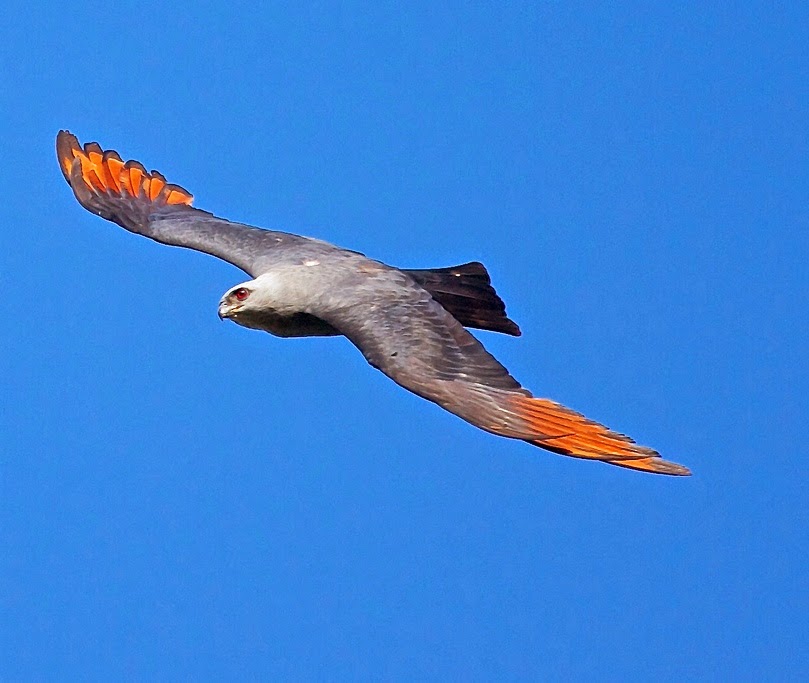 |
| Photo by Michael Andersen (Flickr) |
Common name:
plumbeous kite (en); sovi (pt); milan bleuâtre (fr); elanio plomizo (es); schwebeweih (de)
Taxonomy:
Order Falconiformes
Family Accipitridae
Range:
This species is found from eastern Mexico south to southern Brazil and northern Argentina. West of the Andes they also occur as far south as southern Ecuador.
Size:
These birds are 29-38 cm long and have a wingspan of 70-95 cm. They weigh 190-280 g.
Habitat:
The plumbeous kite is found in various forest habitats, especially lowland rainforests, but also mountain rainforests, mangroves, dry tropical forests and dry savannas. They are present from sea level up to an altitude of 1.700 m.
Diet:
They mainly hunt insects in flight, including beetles, dragonflies, grasshoppers, butterflies, bugs, bees, wasps, flying ants, lacewings, cicadas and termite alates. They also take some small vertebrates, including lizards, snakes, birds, bats and frogs.
Breeding:
Plumbeous kites breeds in March-November. The nest is built by both sexes, consisting of a small, flat cup made of sticks and lined with leaves and moss. It is placed high in a tree, at the base of a branch. Often the same nest is used by a pair over several years. The female lays 1-2 white of pale bluish eggs, which are incubated by both parents for 31-33 days. The chicks are fed by both parents and fledge 36-39 days after hatching.
Conservation:
IUCN status – LC (Least Concern)
This species has an extremely large breeding range and the global population is estimated at 0,5-5 million individuals. The population is suspected to be stable in the absence of evidence for any declines or substantial threats.







